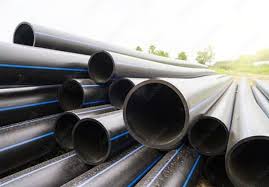Jan . 02, 2025 14:51 Back to list
ppr piping system products
Understanding PPR Piping System Products A Comprehensive Guide
In modern infrastructure development, the efficiency and durability of piping systems are paramount. Among various materials available, Polypropylene Random Copolymer (PPR) has emerged as a favored choice for a range of applications, from residential to industrial settings. In this article, we delve into the essential aspects of PPR piping system products, examining their advantages, applications, and installation.
What is PPR?
PPR, or Polypropylene Random Copolymer, is a thermoplastic polymer widely used for constructing piping systems. Its unique molecular structure gives it remarkable properties, making it an effective choice for various fluid transport applications. Commonly characterized by its green or grey coloration, PPR pipes are often utilized in hot and cold water supply systems due to their excellent resistance to temperature fluctuations and pressure changes.
Advantages of PPR Piping Systems
1. Durability PPR pipes are known for their long lifespan, often exceeding 50 years with proper installation and maintenance. They are resistant to corrosion, scaling, and deposits, making them more durable compared to traditional metal pipes.
2. Temperature Resistance PPR can withstand high temperatures, typically up to 95°C (203°F), which makes it suitable for hot water applications. Its thermal stability ensures reliable performance in diverse environmental conditions.
3. Lightweight Compared to metal piping systems, PPR pipes are significantly lighter, facilitating easier handling and installation. This quality not only reduces labor costs but also minimizes the effort required for transportation.
4. Low Thermal Conductivity PPR has low thermal conductivity, which helps in reducing heat loss in hot water systems. This property contributes to energy efficiency and can enhance the overall performance of heating systems.
5. Non-toxic and Chemical Resistant PPR is an environmentally friendly option, as it does not leach harmful substances into the water supply. Its chemical resistance also allows it to transport various fluids without degrading or contaminating the contents.
Applications of PPR Piping Systems
ppr piping system products

PPR piping products have a wide range of applications across different sectors
1. Residential Plumbing PPR pipes are often used in domestic water supply systems, providing effective solutions for both hot and cold water distribution. Their resistance to scale buildup promotes long-term water quality.
2. Heating Systems In underfloor heating applications, PPR pipes excel due to their thermal stability and efficiency, ensuring even heat distribution and comfort in living spaces.
3. Industrial Applications Many industries utilize PPR piping for carrying fluids, chemicals, and gases. Its resistance to corrosion and chemical reactions makes it particularly suitable for manufacturing and processing environments.
4. Agricultural Irrigation The lightweight nature of PPR pipes facilitates installation in agricultural settings. Their durability ensures a reliable irrigation system that can withstand various environmental conditions.
Installation and Maintenance
Installing PPR piping requires specific techniques that ensure longevity and performance. The fusion welding method is commonly employed, where pipes and fittings are joined by heating the surfaces and allowing them to cool, forming a strong bond. This process requires careful execution to avoid imperfections that could lead to leaks or weaknesses over time.
Routine maintenance is generally minimal due to the resilience of PPR pipes. However, periodic inspections are recommended to identify any potential issues early. Proper installations and adherence to relevant standards can further enhance the system's reliability.
Conclusion
PPR piping system products represent a transformative shift in the way we conceive fluid transport in infrastructure. Their unique combination of durability, temperature resistance, and chemical compatibility makes them an ideal choice for various applications, ensuring long-term performance and minimal maintenance requirements. As technology and awareness continue to evolve, PPR piping is set to play a pivotal role in the future of sustainable building and construction practices, offering efficient solutions for modern-day plumbing needs.
-
High-Quality PVC Borehole Pipes Durable & Versatile Pipe Solutions
NewsJul.08,2025
-
High-Quality PVC Perforated Pipes for Efficient Drainage Leading Manufacturers & Factories
NewsJul.08,2025
-
High-Quality PVC Borehole Pipes Durable Pipe Solutions by Leading Manufacturer
NewsJul.08,2025
-
High-Quality PVC Borehole Pipes Reliable PVC Pipe Manufacturer Solutions
NewsJul.07,2025
-
High-Quality UPVC Drain Pipes Durable HDPE & Drain Pipe Solutions
NewsJul.07,2025
-
High-Quality Conduit Pipes & HDPE Conduit Fittings Manufacturer Reliable Factory Supply
NewsJul.06,2025

